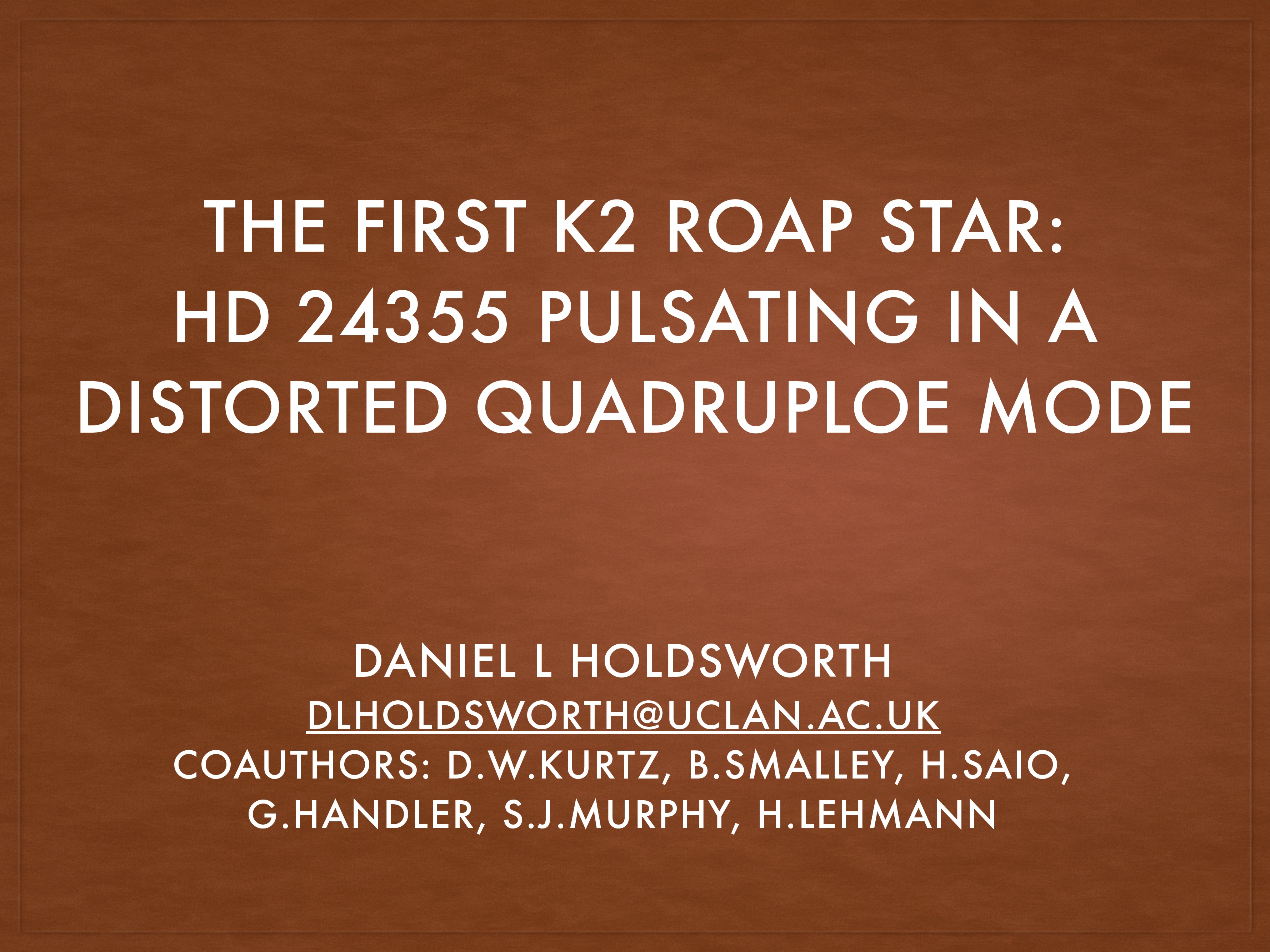Affiliation
University of Central Lancashire
Main category
Natural Sciences (Astrophysics and Astrononmy)
Abstract
We present an analysis of the rst K2 observations of a rapidly oscillating Ap (roAp) star, HD 24355. The star was discovered to be a roAp star by Holdsworth et al. (2014), with a frequency of 224.31 c/d (2596.18 microHz; P = 6.4 min) and an amplitude of 1.51 mmag in SuperWASP broadband photometry. Spectroscopic analysis of low-resolution spectra show the star to be an A5 Vp SrEu star. The high precision K2 data allow us to identify 13 rotationally split sidelobes to the main pulsation frequency. This is the largest number of sidelobes seen in a roAp star to date. We also see an unusual pulsational phase variation as the star rotates, showing this star to be the most distorted quadrupole roAp pulsator yet observed. Modelling of this star confirms its quadrupole nature, and allows us to constrain the magnetic field strength, angle of inclination and the angle of obliquity. This is currently the only roAp star observed with the Kepler satellite in Short Cadence mode that has a photo- metric amplitude detectable from the ground, thus allowing comparison between the mmag amplitude ground-based targets and the micromag spaced-based discoveries.
Further reading
Holdsworth et al, 2016, MNRAS, 462, 867
Do you have problems viewing the pdf-file? Download presentation
here
If the presentation contains inappropriate content, please
report the presentation. You will be redirected to the landing page.
